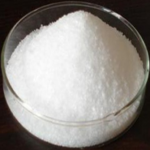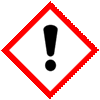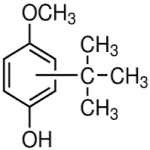CAS Number 25013-16-5, Butylated Hydroxyanisole BHA USP NF BP Ph Eur FCC Food Grade Manufacturers Exporters







CAS Number 25013-16-5, Butylated Hydroxyanisole BHA Manufacturer Exporter
For Properties Specifications of Butylated Hydroxyanisole BHA Click Properties, Specifications of Butylated Hydroxyanisole BHA Manufacturer.
For Uses of aaa Click Uses of Butylated Hydroxyanisole BHA Manufacturer.
For For SDS MSDS Sheet of Butylated Hydroxyanisole BHA Click SDS Safety Data Sheet MSDS Sheet of Butylated Hydroxyanisole BHA Manufacturer.
The Properties and Specifications of Butylated Hydroxyanisole BHA:
Butylated Hydroxyanisole USP NF Grade Specificationse
C11H16O2 --- 180.24
Phenol, (1,1-dimethylethyl)-4-methoxy-.
tert-Butyl-4-methoxyphenol CAS 25013-16-5
Butylated Hydroxyanisole contains not less than 98.5 percent of C11H16O2.
Identification: To 5 mL of a 1 in 10,000 solution in 72% alcohol add 2 mL of sodium borate solution (1 in 50) and 1 mL of a 1 in 10,000 solution of 2,6-dichloroquinone-chlorimide in dehydrated alcohol, and mix: a blue color is produced.
Residue on ignition: not more than 0.01%, determined on a 10-g specimen.
Heavy metals: 0.001%.
Organic volatile impurities: meets the requirements.
Butylated Hydroxyanisole BP Ph Eur Grade Specifications
Butylhydroxyanisole Ph Eur
C11H16O2 --- 180.3 --- CAS 25013-16-5
Action and use: Antioxidant.
DEFINITION
Butylhydroxyanisole is 2-(1,1-dimethylethyl)-4-methoxyphenol containing not more than 10 per cent of 3-(1,1-dimethylethyl)-4-methoxyphenol.
CHARACTERS
A white, yellowish or slightly pinkish, crystalline powder, practically insoluble in water, very soluble in methylene chloride, freely soluble in alcohol and in fatty oils. It dissolves in dilute solutions of alkali hydroxides.
IDENTIFICATION
A. Examine the chromatograms obtained in the test for related substances. The principal spot in the chromatogram obtained with test solution (b) is similar in position, colour and size to the principal spot in the chromatogram obtained with reference solution (a).
B. To 0.5 ml of solution S (see Tests) add 10 ml of aminopyrazolone solution and 1 ml of potassium ferricyanide solution. Mix and add 10 ml of methylene chloride. Shake vigorously. After separation, the organic layer is red.
C. Dissolve about 10 mg in 2 ml of alcohol. Add 1 ml of a 1 g/l solution of 17β-Hydroxyandrost-4-en-3-one propionate in alcohol and 2 ml of dilute sodium hydroxide solution. Heat in a waterbath at 80C for 10 min and allow to cool. A red colour develops.
TESTS
Solution S: Dissolve 2.5 g in alcohol R and dilute to 25 ml with the same solvent.
Appearance of solution: Solution S is clear and not more intensely coloured than intensity 5 of the range of reference solutions of the most appropriate.
Related substances: To pass the test --- (0.5 per cent).
Heavy metals: 1.0 g complies with limit test C for heavy metals (10 ppm). Prepare the standard using 1 ml of lead standard solution (10 ppm Pb).
Sulphated ash: Not more than 0.1 per cent, determined on 1.0 g.
BHA Butylated Hydroxyanisole FCC Food Grade Specifications
C11H16O2 Formula weight 180.25
INS: 320 CAS 25013-16-5
DESCRIPTION
BHA occurs as a white or slightly yellow, waxy solid. It is predominantly 3-tert-butyl-4-hydroxyanisole (3-BHA), with varying amounts of 2-tert-butyl-4-hydroxyanisole (2-BHA). It melts between 48C and 63C. It is freely soluble in alcohol and in propylene glycol, and insoluble in water.
Function: Antioxidant.
Identification: Add 2 mL of sodium borate TS and 1 mL of a 1:10,000 solution of 2,6-dichloroquinonechlorimide:absolute alcohol to 5 mL of a 1:10,000 solution of sample in 72% alcohol, and mix. A blue color appears.
Assay: Not less than 98.5% of C11H16O2.
Residue on Ignition: Not more than 0.05%.
The Uses of Butylated Hydroxyanisole BHA:
Butylated hydroxyanisole (BHA) is a synthetic food antioxidant used to prevent oils, fats and shortenings from oxidative deterioration and rancidity. It is also used in pharmaceutical products.
The MSDS-SDS Hazard Statement of Butylated Hydroxyanisole BHA:
BHA Butylated Hydroxyanisole SDS GHS, Safety Data Sheet
MSDS Sheet, Material Safety Data Sheet 05-Jan-22
1. Product Identification
Product Name & Other Names: BHA or Butylated Hydroxyanisole or "tert-butyl-4-methoxyphenol (2-and 3-mixture)" or tert-butyl-p-methoxyphenol or "t-butyl hydroxyanisole" or mono-tert-butyl-4-hydroxyanisole.
CAS No.: 25013-16-5
EINECS EC Number: 246-563-8
Molecular Weight: 180.25
Chemical Formula: C11H16O2
Relevant uses and uses advised against (if any): Industrial use only.
2. Hazards Identification
GHS, Globally Harmonized System Classification in accordance with 29 CFR 1910
Classification according to Regulation (EC) No 1272/2008
Acute toxicity, oral (Category 4)
Skin irritation (Category 2)
Eye irritation (Category 2A)
Carcinogenicity (Category 2)
Specific target organ toxicity - single exposure (Category 3), Respiratory system
Labeling according to GHS & Regulation (EC) No 1272/2008
GHS Label Elements  Irritant |
GHS Label Elements |
Signal Words: Warning
Hazard statements:
H302: Harmful if swallowed.
H315: Causes Skin Irritation.
H319: Causes serious eye irritation.
H335: May cause respiratory irritation
H351: Suspected of causing cancer.
Precautionary statements:
P202: Do not handle until all safety precautions have been read and understood.
P260: Do not breathe dust/fume/gas/mist/vapors/spray.
P264 Wash thoroughly after handling.
P270: Do not eat, drink or smoke when using this product.
P273: Avoid release to the environment.
P280: Wear protective gloves/protective clothing/eye protection/face protection.
P281: Use personal protective equipment as required.
P314: Get medical advice/attention if you feel unwell.
P330: Rinse mouth.
P301+P312: IF SWALLOWED: Call a POISON CENTER or doctor/ physician if you feel unwell.
P302+P352: IF ON SKIN: Wash with plenty of soap and water.
P305+P351+P338: IF IN EYES: Rinse cautiously with water for several minutes. Remove contact lenses, if present and easy to do. Continue rinsing.
P308+313: IF exposed or concerned: Get medical advice/attention.
P362: Take off contaminated clothing and wash before reuse.
P332+P313: If skin irritation occurs: Get medical advice/attention.
3. Composition/Information on Ingredients
Product Name & Other Names: BHA or Butylated Hydroxyanisole or "tert-butyl-4-methoxyphenol (2-and 3-mixture)" or tert-butyl-p-methoxyphenol or "t-butyl hydroxyanisole" or mono-tert-butyl-4-hydroxyanisole.
CAS No.: 25013-16-5
EINECS EC Number: 246-563-8
4. First Aid Measures
Always seek medical attention after first aid measures are provided.
Inhalation: Remove to fresh air. If not breathing, give artificial respiration. If breathing is difficult, give oxygen. Get medical attention.
Ingestion: Never give anything by mouth to an unconscious person. Get medical attention.
Skin Contact: Wipe off excess material from skin then immediately flush skin with plenty of water for at least 15 minutes. Remove contaminated clothing and shoes. Get medical attention. Wash clothing before reuse. Thoroughly clean shoes before reuse.
Eye Contact: Immediately flush eyes with plenty of water for at least 15 minutes, lifting lower and upper eyelids occasionally. Get medical attention immediately.
5. Fire Fighting Measures
Flammability of the Product: May be combustible at high temperature..
Flash Points: 156C.
Products of Combustion: Carbon dioxide, Carbon monoxide, fumes.
Explosion: Slightly explosive in presence of heat.
Fire Extinguishing Media: Use any means suitable for extinguishing surrounding fire. Use water spray, alcohol-resistant foam, dry chemical or carbon dioxide.
Special Information: In the event of a fire, wear full protective clothing and NIOSH-approved self-contained breathing apparatus with full face piece operated in the pressure demand or other positive pressure mode. At high temperatures or when moistened under fire conditions, it may produce toxic or irritating fumes. Containers may explode on heating.
6. Accidental Release Measures
Personal precautions, protective equipment, and emergency procedures: Ventilate area of leak or spill. Avoid breathing dust/fumes/gas/mist/vapors/spray. Use individual protective equipment (waterproof boots, suitable protective clothing, safety glasses, etc.). Do not approach facing the wind.
Environmental precautions: Do not let the product enter drains, soil, or water sources.
Methods and materials used for containment Cleanup procedures and Storage: Avoid touching the spilled material. Contain spilled material. Cover with an inert, non-combustible absorbent material, (e.g. sand, earth, diatomaceous earth, vermiculite). Vacuum or sweep-up and remove to an approved disposal container.
7. Handling and Storage
Precautions for safe handling: Apply according to good manufacturing and industrial hygiene practices. Ensure proper ventilation. In case of insufficient ventilation, wear suitable respiratory equipment. Wash thoroughly after handling. Do not drink, eat, or smoke while handling. Avoid contact with skin, eyes, and clothing. Minimize dust generation. Avoid breathing dust/fumes/gas/mist/vapors/spray. Keep container tightly closed. Avoid ingestion and inhalation. Use individual protective equipment (waterproof boots, suitable protective clothing, safety glasses, etc.).
Conditions for safe storage, including any incompatibilities: Store in cool, dry, and ventilated area away from heat sources and protected from sunlight in tightly closed original container. Keep air contact to a minimum. Store protected from heat, sparks and ignition sources and incompatible materials. Avoid contact with skin and eyes. Avoid inhalation of dust/mist/vapor. Do not store with incompatible materials like strong oxidizing agents, reducing agents, metals, and acids.
8. Exposure Controls/Personal Protection
Airborne Exposure Limits: Not established.
Ventilation System: A system of local and/or general exhaust is recommended to keep employee exposures as low as possible.
Personal Respirators (NIOSH Approved): For conditions of use where exposure to dust or mist is apparent and engineering controls are not feasible, a particulate respirator may be worn.
Skin Protection: Wear protective gloves and clean body-covering clothing.
Eye Protection: Use chemical safety goggles and/or full face shield where dusting or splashing of solutions is possible. Maintain eye wash fountain and quick-drench facilities in work area.
Other Control Measures: Maintain good housekeeping in work area. Handle in accordance with good industrial hygiene and safety practice.
9. Physical and Chemical Properties
Appearance: White to off-white waxy solid.
Odor: It has faint typical odor.
Odor threshold: Not available.
pH: Not available.
Relative density: around 1.05
Boiling Point: 264-270C.
Melting Point: 48 - 55C.
Flash point: Not available.
Auto-ignition temperature: Not available.
Decomposition temperature: Not available.
Upper/lower flammability or explosive limits: Not available.
Vapor pressure: Not available.
Vapor density: Not available.
Evaporation rate: Not available.
Flammability (solid, gas): Not available.
Partition coefficient: n-octanol/water: Not available.
Solubility: It is soluble in water.
Viscosity: Not available.
10. Stability and Reactivity
Stability: Stable under ordinary conditions of use and storage.
Hazardous Decomposition Products: It emits Carbon dioxide, Carbon monoxide & Fumes.
Hazardous Polymerization: Will not occur.
Incompatibilities: Strong oxidizing agents, reducing agents metals and acids.
Conditions to Avoid: Incompatibles and moisture.
Phenols are incompatible with strong reducing substances such as hydrides, nitrides, alkali metals, and sulfides.
Avoid use of aluminum, copper and brass alloys in storage and process equipment.
Heat is generated by the acid-base reaction between phenols and bases.
Phenols are sulfonated very readily (for example, by concentrated sulfuric acid at room temperature), these reactions generate heat.
Phenols are nitrated very rapidly, even by dilute nitric acid.
Nitrated phenols often explode when heated. Many of them form metal salts that tend toward detonation by rather mild shock.
Segregate from oleum, nitric acid and chlorosulfonic acid.
11. Toxicological Information
Toxicity data
ORL-RAT LD50 > 2000 mg kg-1
ORL-MAM LD50 1100 mg kg-1
Carcinogenic Effects: Classified 2B (Possible for human.) by IARC. Classified 2 (Some evidence.) by NTP.
Mutagenic Effects: Mutagenic for bacteria and/or yeast. May cause damage to the following organs: blood, liver, upper respiratory tract, skin.
Teratogenic Effects: Teratogenic effects have occurred in experimental animals.
Developmental Toxicity: Adverse reproductive effects have occurred in experimental animals.
May affect genetic material (mutagenic). May cause adverse reproductive effects based on animal test data. May cause cancer.
12. Ecological Information
Toxicity data: Not available.
Products of Biodegradation: Possibly hazardous short-term degradation products are not likely. However, long term degradation products may arise.
Results of PBT and vPvB assessment: This substance/mixture contains no components considered to be either persistent, bioaccumulative and toxic (PBT), or very persistent and very bioaccumulative (vPvB) at levels of 0.1% or higher.
13. Disposal Considerations
Whatever cannot be saved for recovery or recycling should be managed in an appropriate and approved waste disposal facility.
14. Transport Information
USA DOT, ADR/RID Europe & Canada TDG: Not Controlled.
IATA: Not Controlled.
15. Regulatory Information
USA:
SARA 311/312 Hazards: Immediate & Delayed Health Hazard. See section 2.
Section 16 - Additional Information
DISCLAIMER: The information and recommendations set forth herein are presented in good faith and believed correct as of the date hereof. It is compiled from various sources and it is not necessarily all inclusive nor fully adequate in every circumstance. In addition, these suggestions should not be confused with nor followed in violation of applicable laws, regulations, rules or insurance requirements applicable. This MSDS sheet is intended only as a guide to the appropriate precautionary handling of the material by a properly trained person using this product. Individuals receiving the information must exercise their independent judgment in determining its appropriateness for a particular purpose.
Anmol Chemicals & Pharmaceuticals Pvt. Ltd. is an off-shoot of Anmol Chemicals Taloja. It is located in MIDC Taloja and it is manufacturing pharmaceutical grades of API, Excepients, Food grade and Reagent grade chemicals. Anmol Chemicals & Pharmaceuticals Pvt. Ltd. is a several decades old group of companies, engaged in manufacturing, supplying, distributing, wholesale supplies for actual users, retail or small pack supplies for research and development chemicals, fine and speciality chemicals, pharmaceutical excipients, mineral fortifiers in chemically pure, Analytical reagent grade, IP BP USP Ph Eur EP JP and other pharmaceutical grade monograph including FCC Food grade chemicals and Nutraceuticals, Mineral Fortifiers at best prices.

Butylated Hydroxyanisole BHA Structure
CAS Number 25013-16-5, Butylated Hydroxyanisole BHA Manufacturer Exporter
ANMOL CHEMICALS & PHARMACEUTICALS Pvt. Ltd.
India, USA, Europe, UAE
TELEPHONE: +912223770100
Navi Mumbai, INDIA
e-mail: info(At the rate i.e. @)anmol.org
Copyright. 10-dec-24
We manufacture:
Glacial Acetic Acid Manufacturer
Hydroxyethyl Salicylate or Glycol Salicylate


